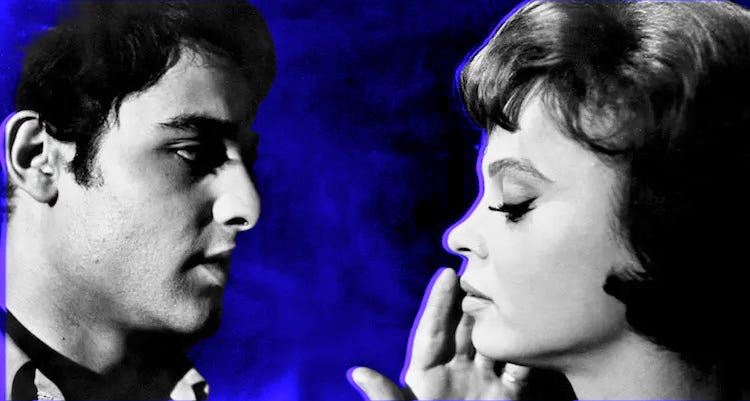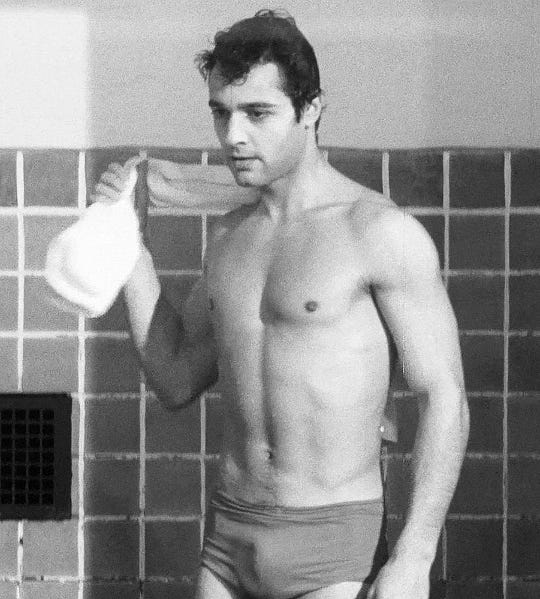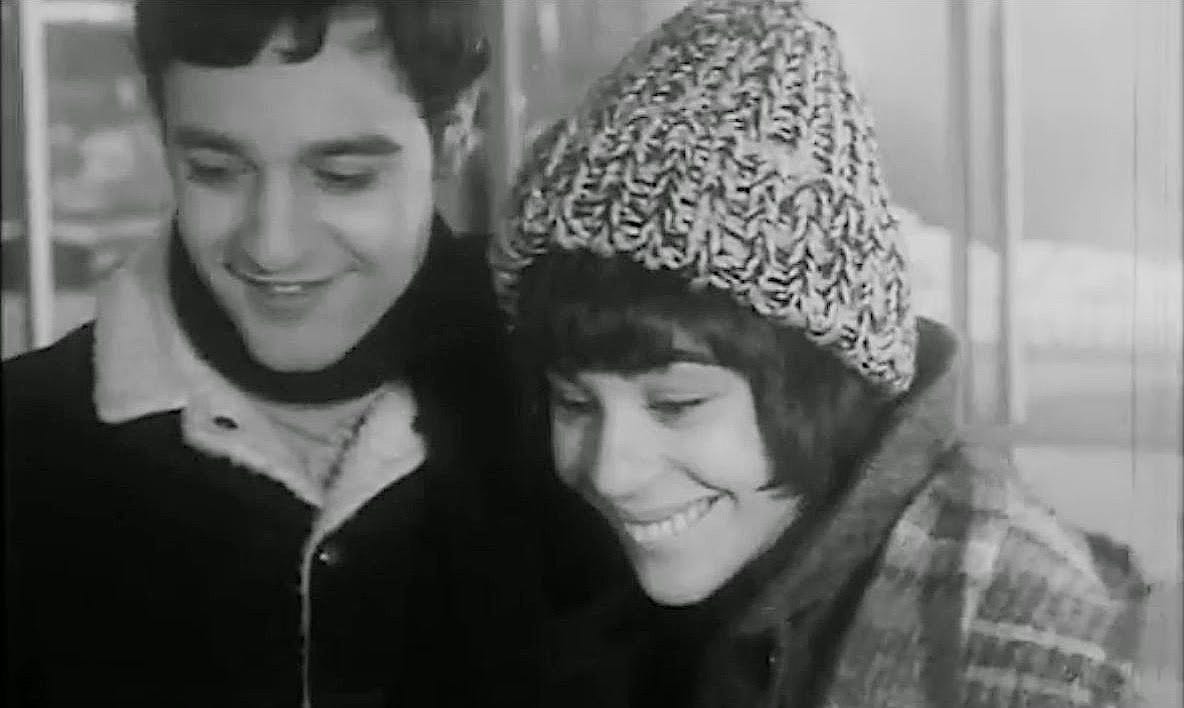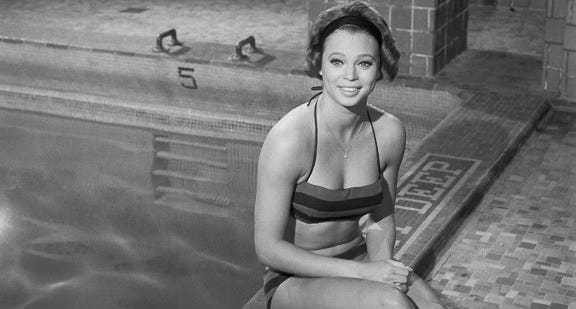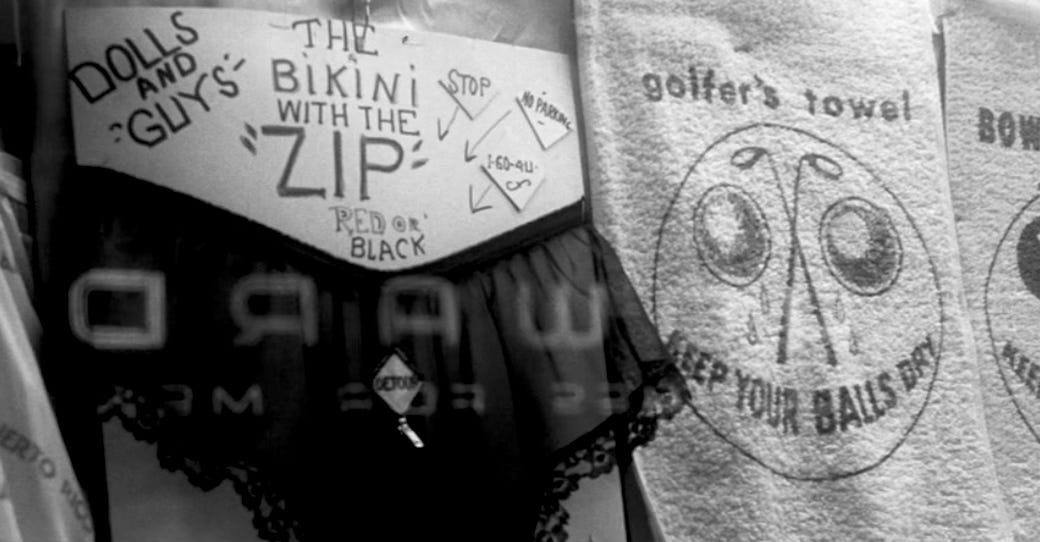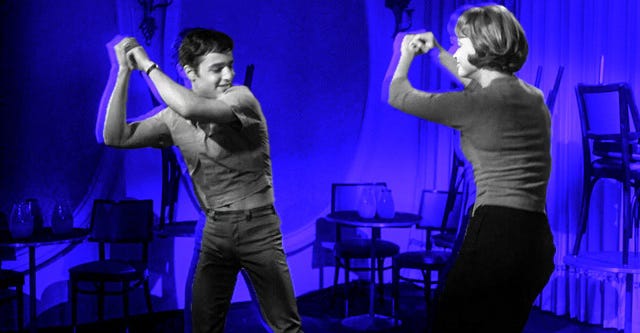Incel Mineo: A Review of Exploitation Classic 'Who Killed Teddy Bear?'
Sal Mineo's psychopath is once again here, is arguably queer — get used to it, ladies
August 8, 2025
Who Killed Teddy Bear? is a high-class, low-class “hooker” (to quote one of the protagonists’ 10-year-old daughter) of a movie masterpiece that can be enjoyed by cineastes and slobs alike. First revived and championed by Film Forum’s Bruce Goldstein in 1996, it is a ‘60s exploitation flick with juuust the right DNA to have become a long-game cult classic.
And its genes are pretty great.
“Why with everybody else … why with every slob … and not with me?”
The 1965 film was directed by Joseph Cates (1924-1998), the colorful epitome of show biz who created The $64,000 Question, cast Art Carney in The Honeymooners and produced/directed/wrote scores of TV specials; discovered David Copperfield; was the brother of Oscars producer Gilbert Cates; was the father of the iconic Phoebe Cates; and was the grandfather of singer Greta Kline and filmmaker Owen Kline, the latter of whose Funny Pages was my third-favorite film of 2022.
It was co-written by comics kingpin Arnold Drake (Deadman, Doom Patrol, Guardians of the Galaxy), shot by cinematographer Joseph Brun and is tricked out with legit brilliant period music supervised by Charles Calello that is written and performed in part by Al “The Morning After” Kasha and Bob Gaudio of Frankie Valli and the Four Seasons fame.
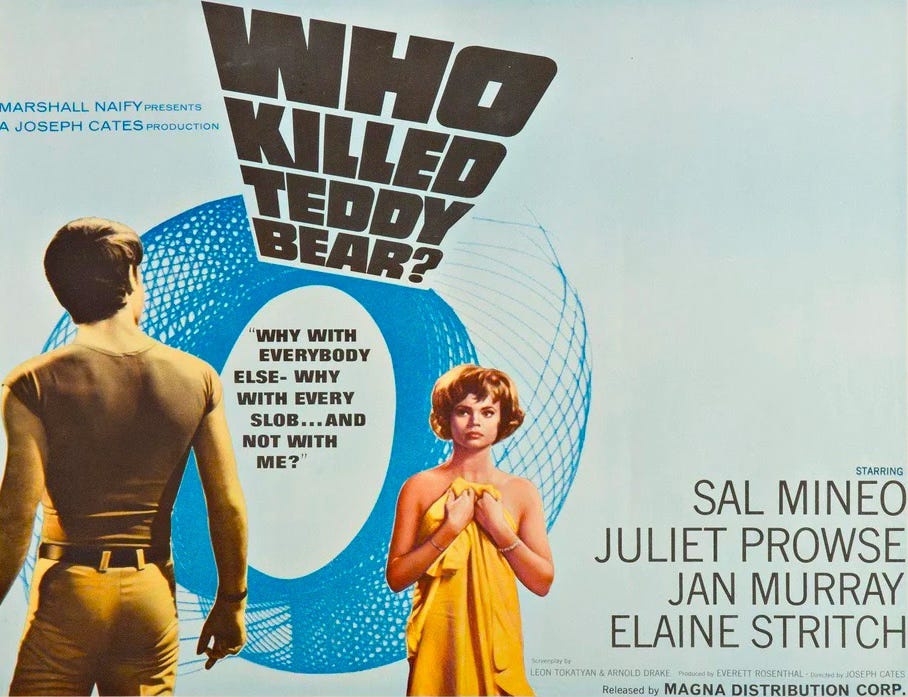
Plus, Rita Dyson’s mournful theme song manages to be deeply moving and hysterical at the same time.
That constitutes a lot of creative talent for a movie that was originally conceived as a no-stars-involved flesh flick. I would argue the top-notch talent — and the decision by former teen star and two-time Oscar nominee Sal Mineo to star in it as a murderous perv — is what elevated the proceedings, resulting in a (delightfully) nasty piece of work that has always reminded me of Peeping Tom (1960) meets one of its spiritual godchildren, Sleepaway Camp (1983).
I think it is Mineo’s participation that takes the film to a deeper place, one that begs analysis, because while he was hoping it might reignite his career by showing off his range, it is impossible to dismiss he probability that Mineo’s real-life kinkiness could have, in part, motivated him to play against his image as the bad guy. Mineo is often called bisexual because of a relationship with Cabaret star Jill Haworth, though he apparently slept only with men ever after. Being queer isn’t much of a secret anymore, but in the ‘60s, it was still framed as a shocker in movies, if at all. Perhaps his understanding of possessing that secret is what gives his performance layers. Inarguably, his mere presence is all it takes to stack this film’s queer cred for those in the know.
The story of Who Killed Teddy Bear? is about beautiful wannabe actress Norah Dain (Juliet Prowse, demonstrating she was so much more than a great pair of legs), a recent transplant to NYC hoping for her big break.
She is terrorized by a series of obscene phone calls being made by an unseen brute in jockeys (in real life, Mineo fetishized them; Cates confirmed they were Mineo’s own jockeys) who masturbates to completion if she scolds him too long, eventually letting her know he’s had his eye on her in person.
Joseph Cates speaks at length about his film here.
At first, the film teases us by obscuring the masher’s identity. Could it be a piggish patron at the charmingly apartment-like disco at which Norah spins discs? Or maybe it’s the mute bouncer at the club (a very young, very handsome Daniel J. Travanti)? It could even be the smarmy cop assigned to her case (woefully miscast comic Jan Murray, a real-life pal of the director’s), since he is morbidly obsessed with sex criminals and can’t seem to help joking with her that he could be her stalker.
How many times does a cop get to tell you you’re as good as dead before he at least gets written up?
But when Cates lets us in on who our freak-in-the-streets is, we have already guessed that it is her comely co-worker, Lawrence Sherman (Mineo). At his all-time sexiest, Mineo skillfully balances his character’s puppy-dog tendencies, his boiling-over rage and his psychopathic mommy issues on a razor’s edge, impregnating his scenes with Prowse with tension and dread, even as her character blithely overlooks him as any potential threat.
We can’t blame her. Lawrence is a gym bunny who fills out his scant swimsuit so well Norah can’t help but remark that he’s got a good body, unwittingly teasing her tormenter. Another plus, he seems to be super protective of his younger sister Edie (played hammily by Margot Bennett, who was actually several years Mineo’s senior). Edie has been rendered slow after witnessing her brother getting it on with their mother and falling down a flight of stairs as a child. The mother is nowhere in sight now, and her absence seems to be what makes Lawrence’s heart grow fonder of women who do not return his interest.
The film is hell bent for leather in its quest to present a far grittier, more no-nonsense vision of Manhattan in a way that would later be echoed in more establishment-pleasing iconoclastic films, including Midnight Cowboy (1969) and Taxi Driver (1976).
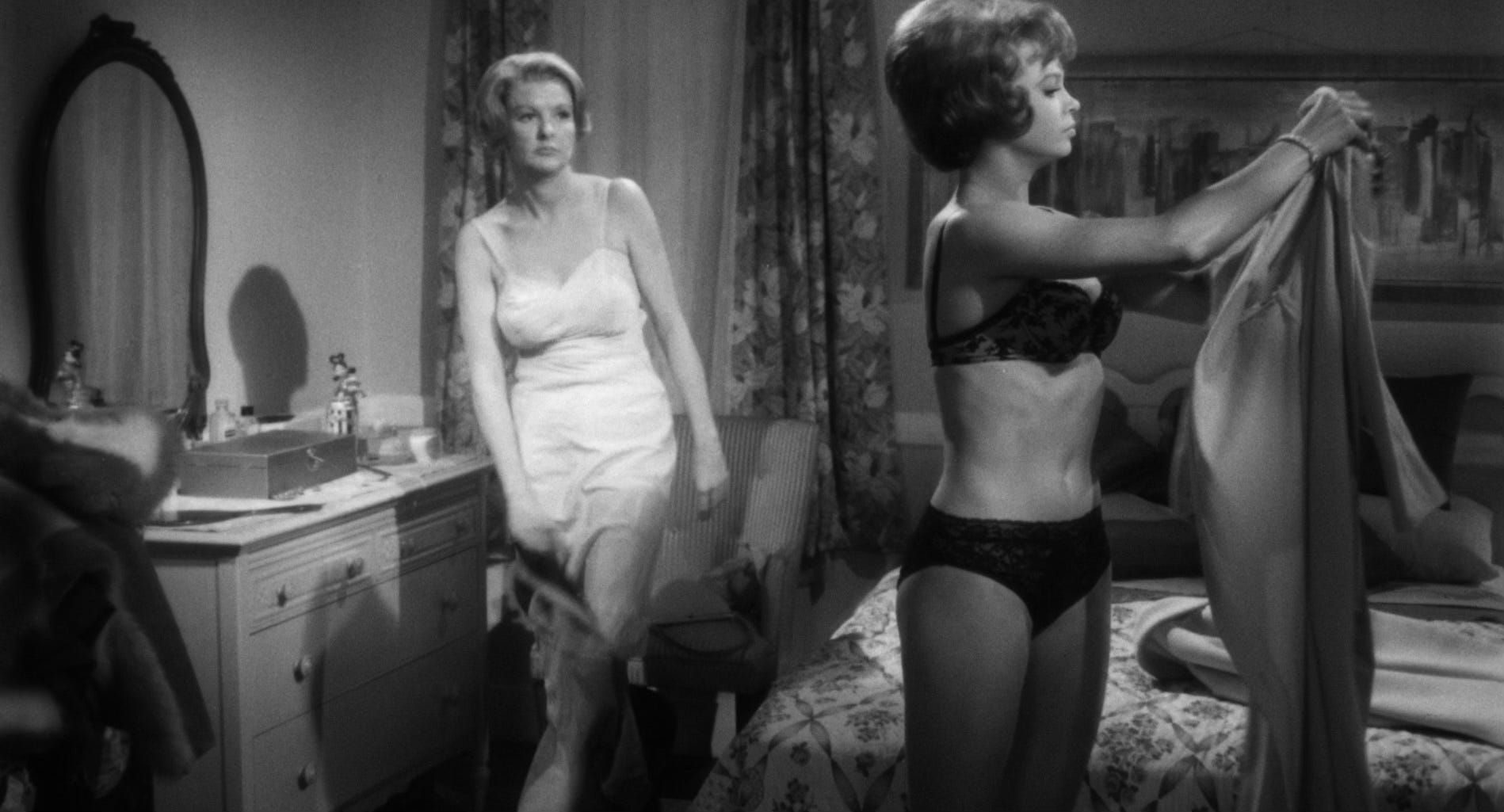
It is in pursuit of that vérité vibe that the film gets its queer cred, as it includes an opportunistically predatory dyke (brilliant Elaine Stritch), priceless footage of the inside of a dirty magazine shop with glimpses of some gay lit, and generous stolen footage on the streets of NYC, in particular Times Square, that could be the stomping grounds of any self-disrespecting gay man of the era on a nightly cruise.
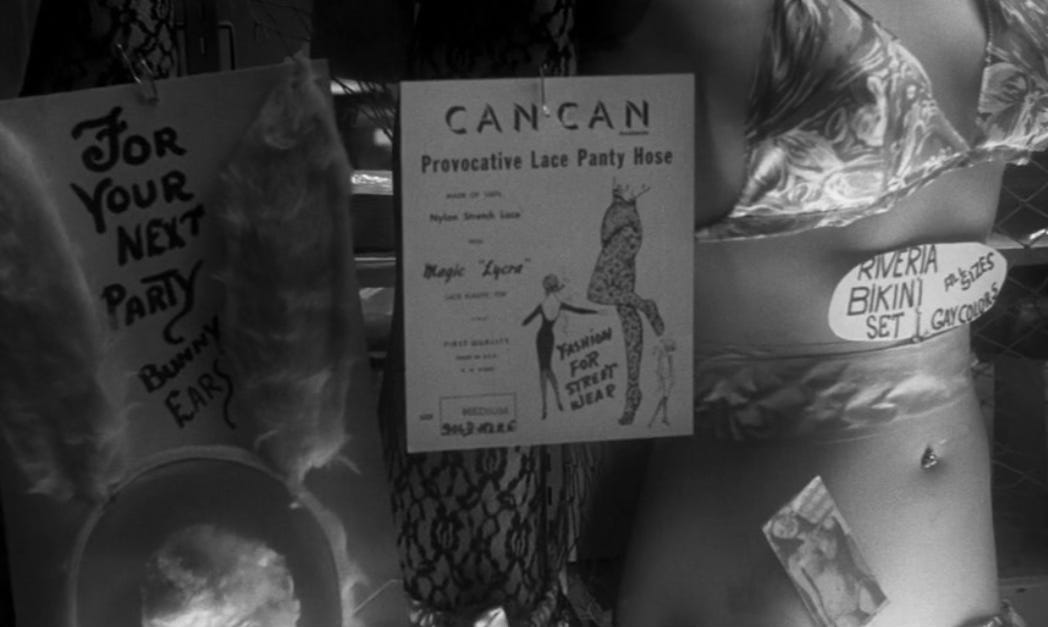
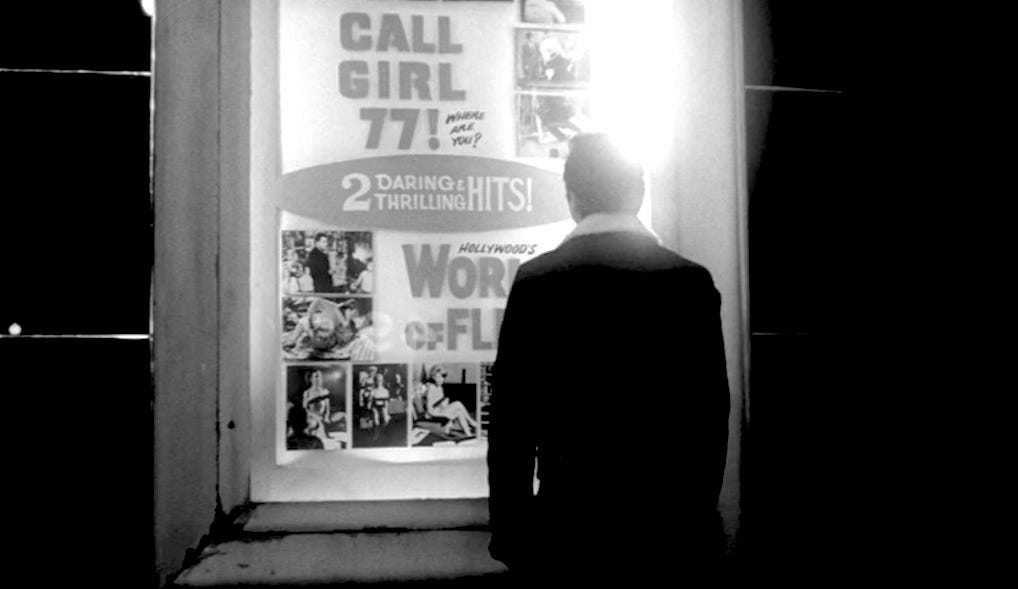
Thanks to that footage, Who Killed Teddy Bear? would be a great film even if it weren’t a very good one — like, for example, Sticks and Stones (1970) — but the film actually works. It is not as refined as Peeping Tom or Psycho, both released five years earlier, nor is it a comically bad laugh-riot.
At the center of why it works as a thriller is Prowse’s effortlessly likable Norah, the film’s more moral version of Marion Crane, and Mineo’s effortfully unlikable Lawrence. As Tony Perkins had to do with Norman Bates, Mineo had to work hard to exude the magnetic quality of brokenness that he does in order to disavow us of any notion that Lawrence might be who Plato from 1955’s Rebel Without a Cause grew up to be.
The two of them would be enough, but Stritch is as deliciously hard-boiled as an 11-minute egg, and when she starts talking about her bra, you better believe she has a backstory for it. The hurt she registers when rejected by chaste Norah is surprisingly moving. It oughta be a crime to wound an Elaine Stritch character, but the film has too many other offenses on which to focus — necrophilia, voyeurism, masturbation, incest — all in the months after The Sound of Music hit theaters and with only Borscht Belt refugee Jan Murray on the case.
It’s not that Teddy Bear? has zero heavy-handed, camp momentsm but the suspense is real and the look of the film abducts our attention and forces it to hold.
Most mesmerizing of all is the use of dance, frequently focusing on couples at the disco dancing with hedonistic abandon — and for minutes on end — the Frug, the Watusi, the Swim and several others. The film unironically climaxes right after we finally get to see its supremely gifted dancer of a leading lady lead Mineo in a spirited dance of their own. Prowse’s moves put to shame all others, like when the choreographer shows you how it’s done, and Mineo writhes so sexily in his crop-top it is unmistakably a filmic preservation of the fabled “gay boogie” as performed by Vince and Billy in Patricia Nell Warren’s 1974 novel by The Front Runner.
Prowse on her real-life masochistic pursuit as a world-class dancer:
It is when the two dance that the film’s queerness is most out of the closet. As if realizing it, it is at this point that Mineo’s character becomes enraged, and it is Norah who pays the price for his hang-ups, and does so in a scene that even today is squirm-inducing, and must have been stomach-turning 60 years ago.
Without detailing exactly how Teddy Bear? ends, I think the filmmaker felt it was somehow a happy finale, or at least an ending that is supposed to leave its shocked audience relieved, because, “Hey, it could’ve been woise.”
I will say that the film’s much-talked-about rape scene — easily of the most graphic in an American film up until that time — winds up feeling far more personal by focusing on facial acting than scenes in subsequent films that have explicitly shown much more.
Who Killed Teddy Bear? is a time capsule, a marvel, a hoot, a cautionary tale and as gay as Sal Mineo was after he dated Jill Haworth. Don’t miss it. ⚡️
A Q&A with Owen Kline & Bruce Goldstein at Film Forum on August 8, 2025:
Below, Cates speaks about The $64,000 Question — this material was played during the Film Forum Q&A, but I cut it out so as not to shoot the screen:
A new 35mm print of the film, courtesy of Owen Kline and Vinegar Syndrome, is at NYC’s Film Forum now through August 14.





